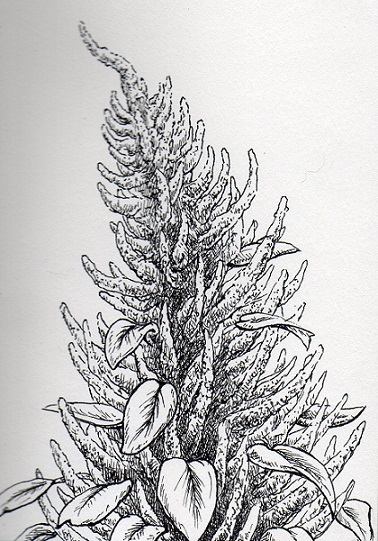Sign In
CloseToday's Nature Post features the plant Amaranth. There are over 60 species of Amaranth, or Amaranthus, with three of these species grown and harvested for their seeds which are called Amaranthus Hypochondriachus, Amaranathus Caudatus, and Amaranthus Cruenus. The name Aramanthus originates from the Greek word Amarantos which means "the never-fading" or "one that does not wither". This comes from the plant's flower's ability to hold on to their vibrant colors even after they have been dried. Non-edible species of Amaranth have even been bred into decorative plants with more emphasis on the brilliant colors of their leaves which can be a light green with purple veins to a blood-red color. The flowers of this plant are known for their bright purple, gold, or red colors. For growth, Amaranth plants prefer high elevations, however, they are known for being a highly adaptable plant able to grow in many types of climates as long as they have moist, loose soil with good drainage. Amaranth is native to South America and is said to have been domesticated around 7,000 years ago. It was used as a primary crop by the Aztecs for food as well as religious uses. Images of Gods were created from a mixture of Amaranth grains and honey which were worshiped by the people before being broken into pieces to be consumed by the people. Over time, Amaranth's popularity took it into other areas of the world such as China, Thailand, and Russia. In the 1970s, Amaranth gained interest in the United States and began to grow in population. The health benefits to this food source are incredible. Amaranth is the only documented grain to contain Vitamin C and possesses high levels of potassium, iron, magnesium, and phosphorus with three times the amount of calcium than normal. This plant also contains approximately 14% protein with the amino acid lysine that is not present in other grains. Multiple studies have shown that Amaranth works as a cholesterol-lowering grain and even contains a peptide, or chemical bond, originally found in soybeans which is believed to prevent cancer as well as block inflammation. These properties mean that Amaranth is beneficial to those suffering from heart disease, diabetes, and cardiovascular disease. Throughout Nepal, Peru, and Mexico, Amaranth is often eaten in oatmeal while many South American countries sell Amaranth seeds in a way similar to popped popcorn. In ancient times, Amaranth was often used in rituals with many uses. The Zuni tales spoke of how Amaranth was a plant brought to this world from the otherworld. This connected with it's use of aiding spirits in crossing back to the otherworld. Aztecs called this plant by the name Huauhtli and viewed Amaranth as their most sacred grain and wreaths were made of Amaranth flowers to aid in healing. It is thought that Amaranth will even help to heal a broken heart or to keep one invisible from negative influences. Amaranth is often associated with the Goddess Artemis, the element Fire, and aligned with feminine energies.
Submission Information
- Views:
- 465
- Comments:
- 0
- Favorites:
- 0
- Rating:
- General
- Category:
- Visual / Traditional




